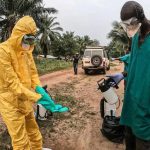Uganda has intensified border surveillance following a suspected Marburg virus disease (MVD) outbreak in neighboring Tanzania, where eight deaths have been reported.
Health Minister Jane Ruth Aceng announced on Friday that the World Health Organization (WHO) had alerted Uganda to the outbreak in Tanzania’s Kagera region, which shares a border with several Ugandan districts.
Aceng identified Kyotera, Isingiro, Rakai, Kalangala, and Ntungamo as districts at high immediate risk of MVD importation.
While no confirmed or suspected cases of MVD have been reported in Uganda, the Ministry of Health is taking proactive measures.
“We are aware that significant cross-border movement occurs beyond official entry points,” Aceng stated. “Therefore, we have enhanced surveillance at designated entry points, implemented active case finding, and intensified public health communication in the high-risk border districts.”
The WHO has classified the regional risk as high, recognizing Kagera’s strategic location as a transit hub with extensive cross-border movement involving Uganda, Rwanda, Burundi, and the Democratic Republic of the Congo.
“We advise the public, particularly those residing in high-risk districts, to remain calm but vigilant,” said Aceng. “Anyone experiencing symptoms consistent with Marburg virus disease, such as fever, headache, back pain, diarrhea, vomiting with blood, body weakness, and external bleeding, should immediately report to the nearest health facility.”
The Ministry of Health will continue to closely monitor the situation and provide timely updates.
MVD is a highly virulent disease that causes hemorrhagic fever. It is characterized by a high fatality rate, reaching up to 88% in some outbreaks. The virus is zoonotic, meaning it can be transmitted from animals to humans. Transmission to humans occurs through direct contact with the bodily fluids of infected individuals or contaminated materials such as blood, tissues, or surfaces.




















